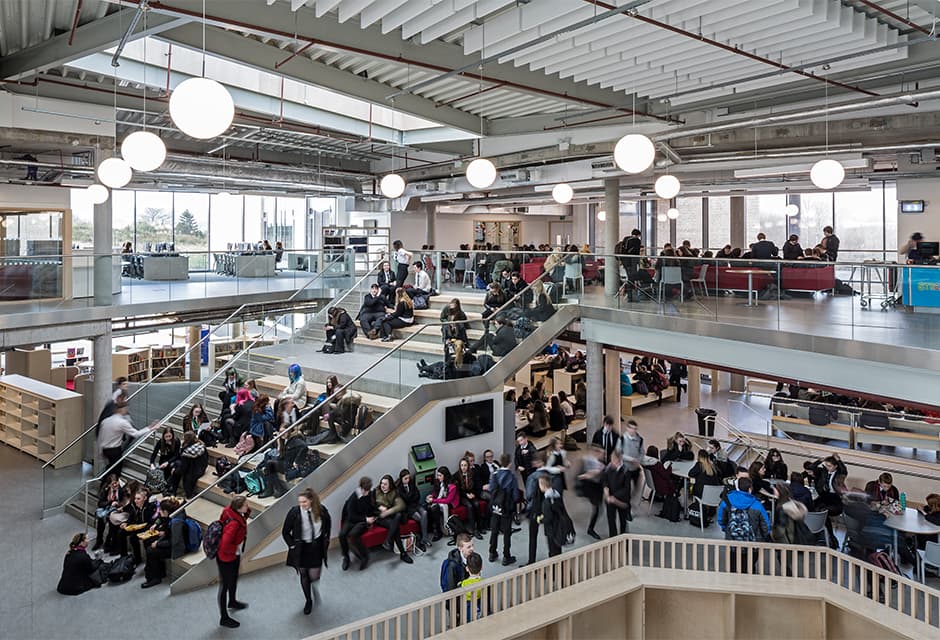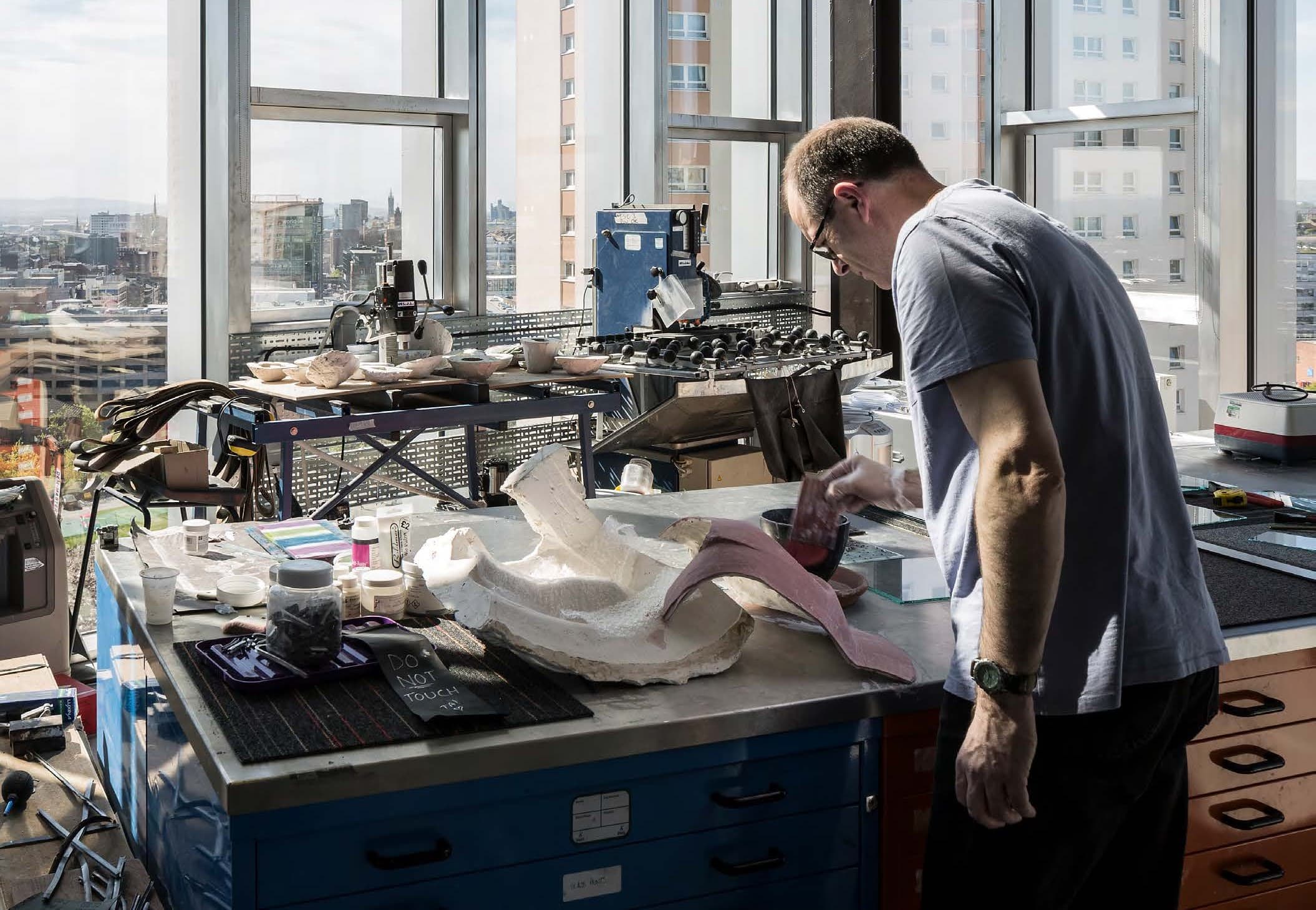Toilet design in the learning environment
The issue of school toilet provision and management has never been more prominent.

Access to good quality toilet facilities is essential for learners. And as Dr Emma Kell highlights in her 2019 article ‘Never forget the importance of School toilets’, the issue of school toilet provision and management has never been more prominent. It is regularly in the news.
Haa Design (on behalf of Architecture and Design Scotland) wrote this case study to help you gain a better understanding of the importance of toilet design in the learning environment.
Whether you are a design professional, local authority or stakeholder of an education establishment, this case study is intended to:
- help you understand the issues and opportunities regarding toilet provision in schools
- present a range of potential solutions
Examples of well-designed toilets in learning environments
We have included five examples of well-designed toilets to illustrate what is available in the PDF. For full architectural information such as the experience of learners using the facility and other examples, download the PDF.

West Calder Highschool
West Calder Highschool, West Calder
The recently opened school has won critical acclaim for the design of its learning and social spaces and is built over three levels.
- The ground floor contains the sports facilities (shared with the local community) with toilets contained within separate male and female changing rooms
- The large communal social space on the first floor (the level at which students enter the building) contains the only toilet block on the main teaching floors
- The second floor as well as the first contains accessible toilets to comply with building regulations
- Throughout the school staff have access to these accessible toilets as there are no dedicated staff toilets
Reaction
Before the move, there was some concern expressed by parents over the introduction of mixed toilet facilities, but this has dissipated following the successful move to the new school.
Teachers have reported no issues to date with the toilets and pupils have adapted to the new shared facilities with no problems, being very appreciative of the cleanliness of the toilets.

Harris Academy
Harris Academy, Dundee
Replacing the former Harris Academy on the same site, the newly merged school retains a link with the former building through the incorporation of the original 1931 clock tower and stone portico. It also accommodates pupils from another recently closed local secondary school.
- The new building is not only an inspirational learning centre but also provides modern facilities for the local community
- Designed to maximise flexibility and to support the new pedagogies, the four-storey building has a stepped profile that allows it to sit comfortably within the landscape
- The new building was designed with enhanced provision for students with special educational needs
Reaction
The original intention was to have two female toilets in each pod on one teaching wing and two male toilets in each pod on the other wing at each level. The change to the one male and one female toilet per pod was a result of dialogue with the pupil council.
An initial general concern regarded how the pupils from the two merged schools would mix; a secondary concern was how the pupils would react to the open nature of this communal central toilet facility.
Regarding the latter, the pupils have adapted very quickly and easily to the new design of toilet provision and the fact that it is open makes managing the space far easier. There is no indication that cubicles further away from the wide opening are more popular.
Due to the open nature of the facility, there has been a slight issue over the noise from the hand-dryers disturbing learning and teaching in nearby classes, though the use of the toilets during teaching time is limited.

Ibrox Primary School
Ibrox Primary School, Glasgow
Built-in 1906, Ibrox Primary School is a historic building with accommodation over four storeys and external buildings containing gym facilities and toilets. It is currently home to a diverse mix of pupils from a range of backgrounds and ethnicities.
- In 2013 the building fabric was surveyed and found to require significant investment and repair
- Glasgow City Council, as part of the five-year, £250 million 4Rs programmes (‘Right Schools, Right Size, Right Place, Right Time’) began a phased (and budget-driven) ‘root and branch’ refurbishment of key areas within the school
- It concentrated primarily on the fabric, but also attended to the facilities such as the internal and external toilet accommodation
The upgrading of the external toilet facility was completed in April 2019.
Reaction
Despite external toilets being a somewhat old-fashioned concept, the response to the new toilets at the school has been very positive.
Such was the condition of the former facilities that the refurbishment was seen as long overdue. The use of indoor toilets during the refurbishment was very time-consuming for pupils during breaks (having to enter the building and walk up a flight of stairs).
By virtue of the design (the entrance doors only have small vision panels), staff supervision of the outside toilet facilities is very difficult, though members of staff patrol the playgrounds during breaks and announcements relating to inappropriate behaviours within the toilets are repeated regularly during school assemblies.

Dalbeattie Leaning Campus, Dalbeattie
Dalbeattie Learning Campus, Dalbeattie
Dalbeattie Learning Campus provides upgraded and integrated educational facilities for the Dalbeattie area, bringing together Dalbeattie High School with Dalbeattie Primary School and Nursery School onto one shared, multi-purpose site. It is the embodiment of the learner's journey under one roof.
- It is an ‘all through’ learning campus that provides both traditional and flexible learning spaces for all pupils
- It offers a wide range of social spaces and spaces designed for more vocational learning
- There is some separation between primary and secondary school environments
- The central, shared space and a common design approach result in a campus where younger pupils can experience the future learning environment
- It is designed to ease the transition process for younger pupils
Reaction
In practice, in the primary school, boys use toilet facilities on one side of the corridor and girls on the other; this was favoured by the school from the outset (even though the wall graphics indicate them being gender-neutral). Staff and pupils (and cleaners) are very happy with the way the toilets are working.
The only set of toilets where there is a degree of mixing are those closest to the primary seven class, where several of the cubicles contain additional sanitary facilities.
Having wash-hand basins in the cubicles was seen by staff as being important; the experience in the old primary school was that handwashing at a bank of wash-hand basins was an opportunity for disruptive behaviour.
Pupils are happy with the new toilet provision, commenting that they are always clean.
In the secondary school, staff have been surprised that pupils have adapted well to the new, gender-neutral toilet facilities on the ground floor. There have been no issues reported by teaching staff and cleaning staff commented on the fact that the facilities are being treated with respect, with no instances of vandalism.
The reaction of pupils has been somewhat more mixed. The cleanliness of the facilities is appreciated, but the feeling is that they are too open with a preference for either doors or a partition to provide more screening to the circulation.

Lairdsland Primary School
Lairdsland Primary School, Kirkintilloch
Lairdsland Primary is the result of a Scottish Futures Trust initiative to design a reference school that is suitable for delivering the Curriculum for Excellence. It includes elements of the layout borrowed from an earlier and very successful project by the architects.
- The two-storey building sits alongside the Forth and Clyde Canal and has classrooms on both floors
- The upper classrooms each have direct access to a covered area that sits on top of the toilet blocks situated on the ground floor
- The interior of the school has a mixture of semi-enclosed formal and informal learning spaces with easy access to outdoor learning spaces
Reaction
The response to the design of the toilets has been overwhelmingly positive from a staff perspective. The remark that there have been no adverse comments from parents (or reports of any issues with pupils’ use of the toilets) is seen as echoing the staff's perception of the success of the design.
The vision panel on the door from the classroom allows teachers to monitor pupils in the toilet block, the fact that two classrooms share a block of toilets means that both teachers can act as monitors.
While there are two sets of two toilets per block on the ground floor, pupils don’t feel constrained to use those closest to their classroom; they have adopted the gender-neutral set-up very quickly.
The cloakrooms adjoining the toilets have plenty of natural light and can be customised with pupils’ artwork. More space for storing coats and jackets would be welcomed by the staff.
Related case studies
We have a variety of case studies on learning environments available on our website. These case studies showcase the benefits of good design in Scotland’s built environment and key learnings from the projects. Click on the links below to find out more.



